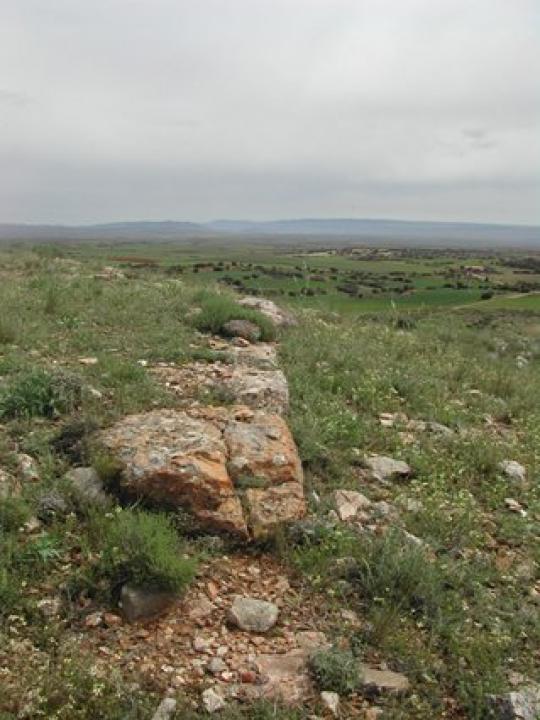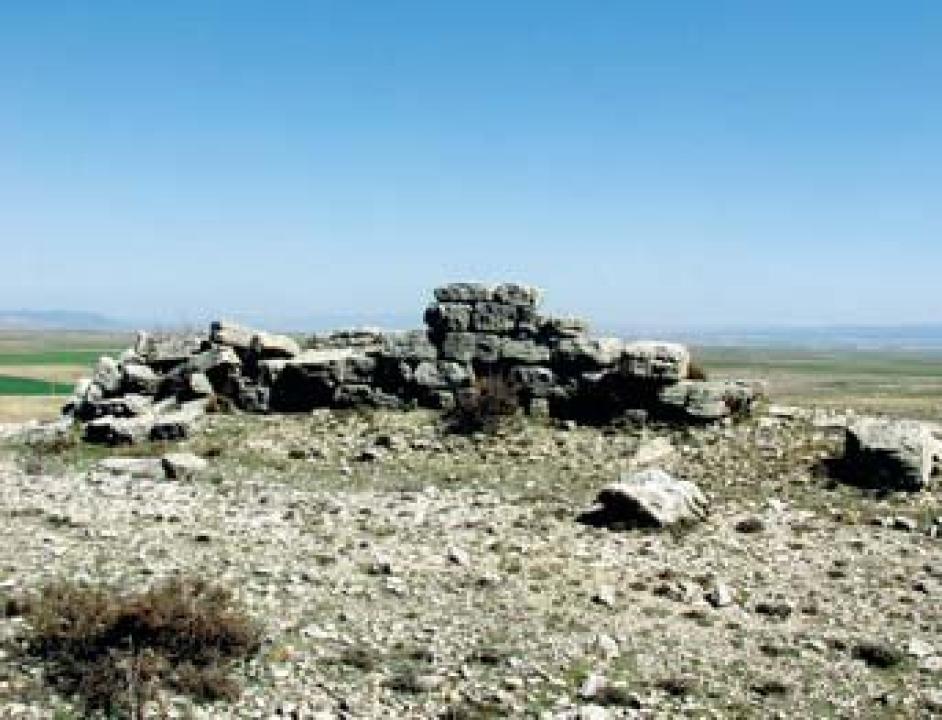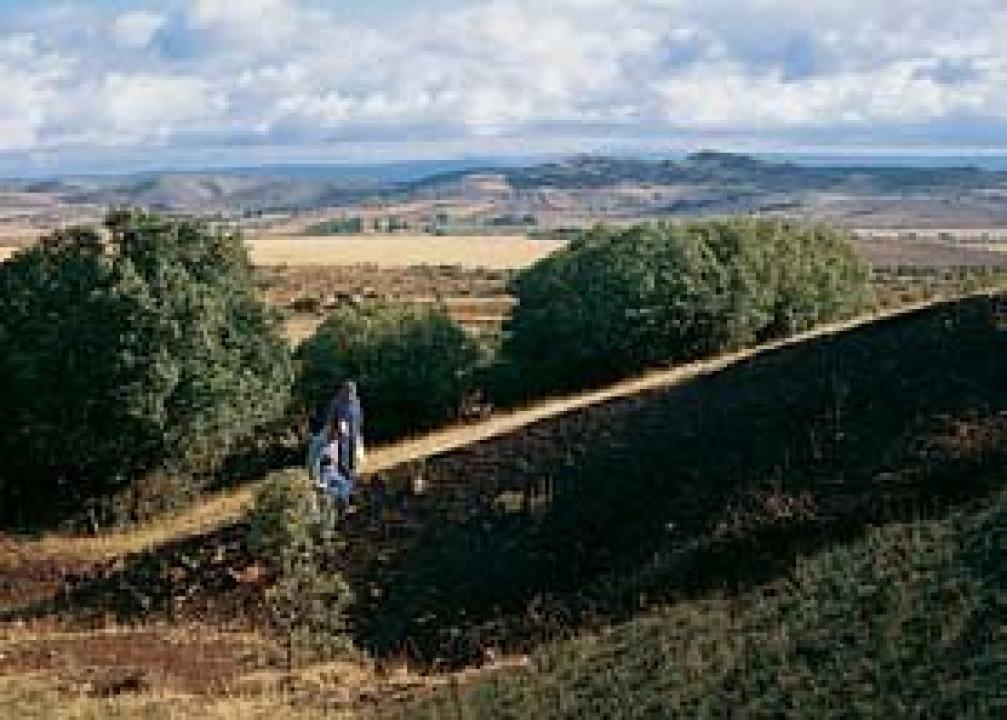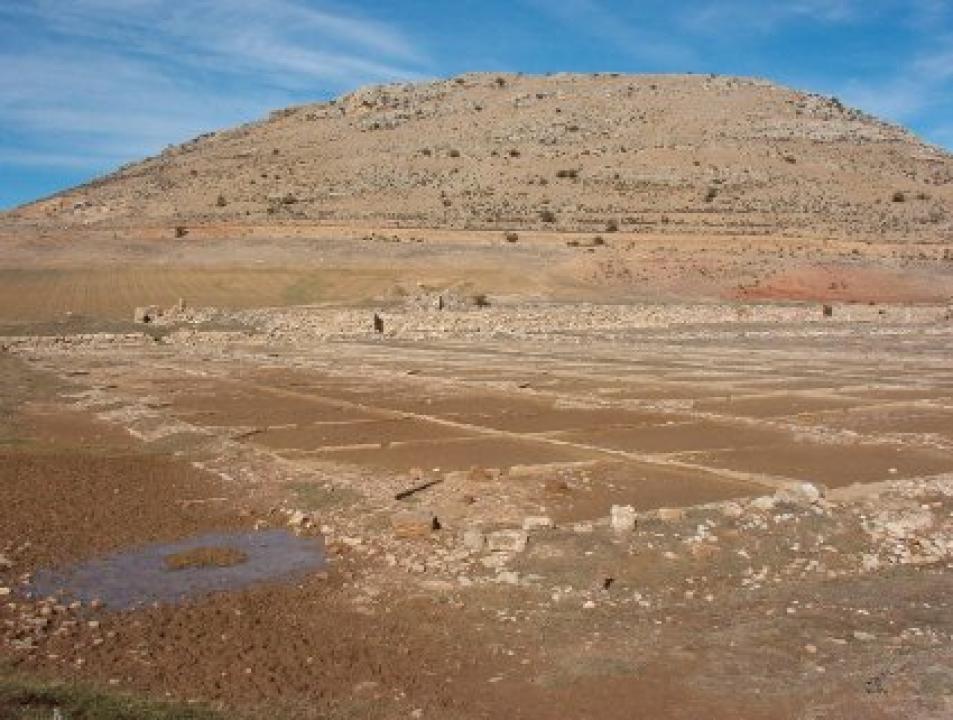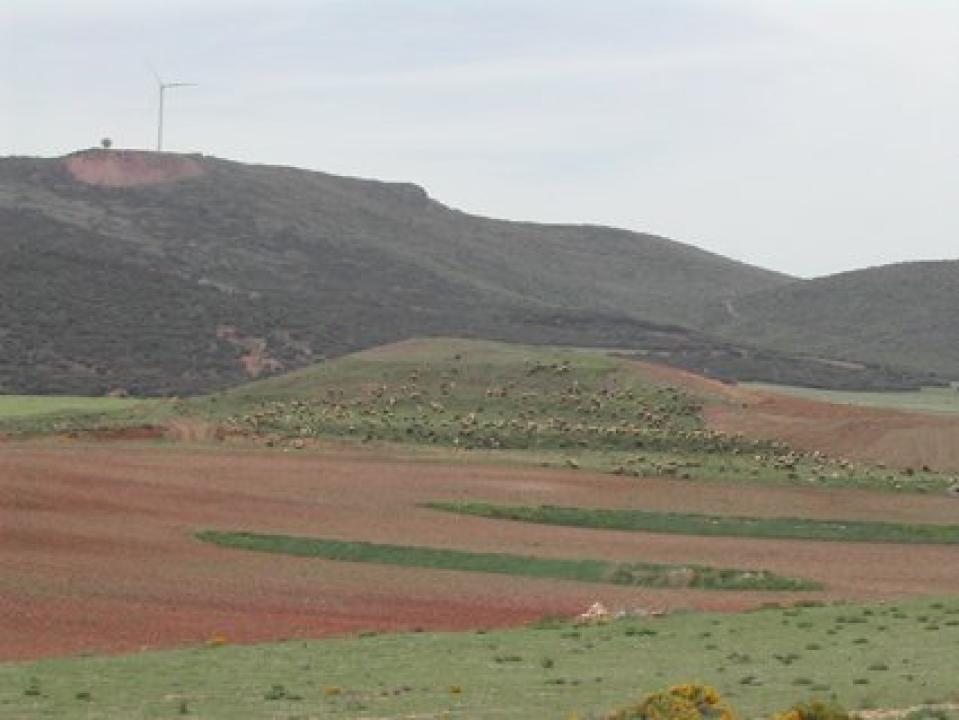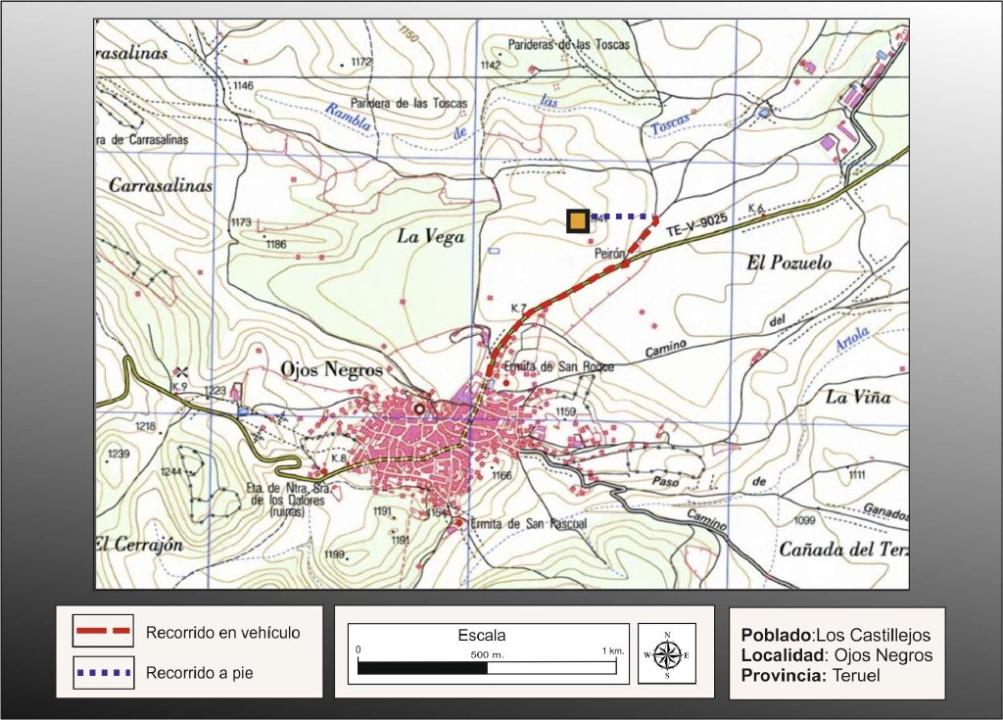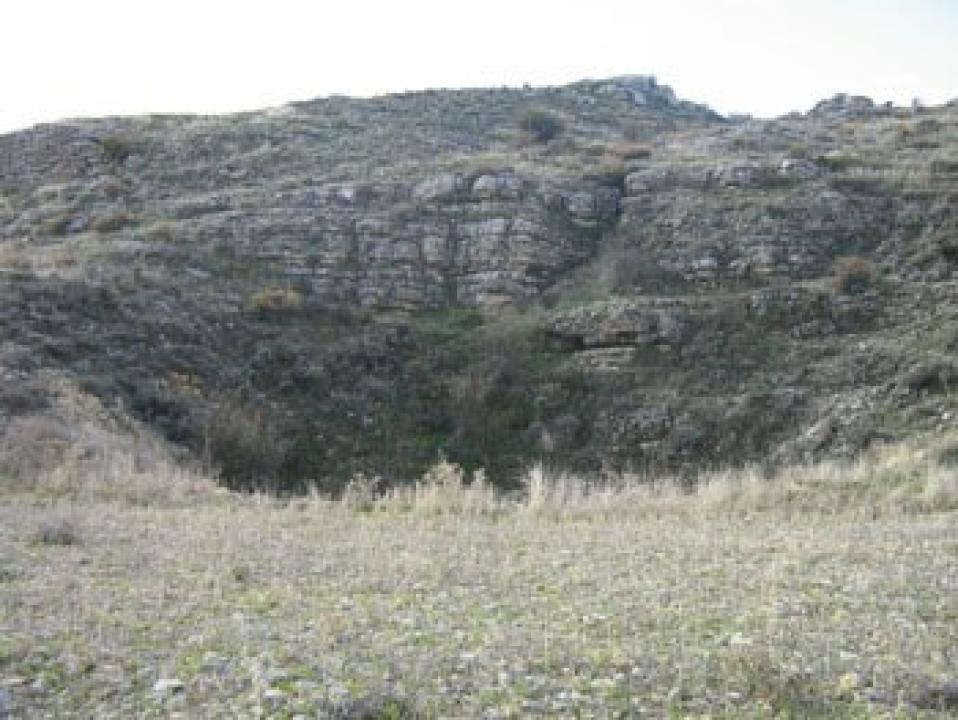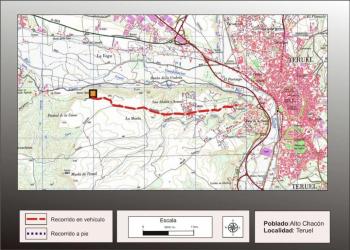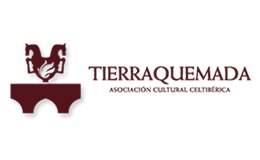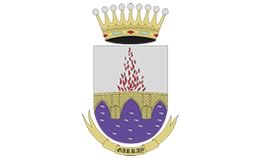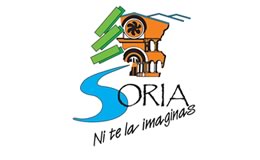

Getting there
Ojos Negros access is via the N-211 from Monreal del Campo, taking, at 7 Km, the detour to Ojos Negros. The mining area is vast, and there are multiple large holes and tailings observables.
Situation and location
Sierra Menera straddles the provinces of Teruel and Guadalajara. This formation contains huge mountain of iron ore deposits of high quality, which together with ease, sometimes presented the work of extraction, many outcrops located on the surface, through small trenches, provided a suitable framework for its operation.
Research
There are no references in ancient sources of mining activities in Sierra Menera, as known in relation to the Moncayo. But the archaeological surveys conducted in recent decades by Julian Ortega Clemente Polo and have unearthed a dense set of sites that indicate the existence of a significant activity of a metallurgical Celtiberian-Roman times and medieval.
Mineral extraction was also performed at other times later, having taken place the last achievement in the twentieth century (1903-1987), which has nullified the remnants of old farms, so the study period is conditioned celtiberica to villages, linked to the work of exploitation and smelting.
VISITING THE MINING TOWNS
General Characteristics
These villages choose more easily defended and highly visible, usually hills or escarpments of platforms. These are small settlements with less than one hectare area surrounded by thick walls, which do not hide their component housing and domestic and agricultural use of the environment.
This framework is developed exploitation of mineral resources, especially iron and salt, so important for sheep and steel. The number of settlements and associated slag shows that the manufacture of iron tools reached significant levels, as evidenced by the abundance of tools found during excavations at La Caridad in Caminreal, probably converted control and distribution center.
Interior space and the village
The houses are rectangular and are arranged side by side, usually attached by one side close to the wall, leaving a central space or street, which are oriented facades.
The walls of the houses are made of stone and the heightening of adobe or mud walls, plastered with mud and whitewashed, wooden roof covered with branches and reinforced with clay. Your space is shared in several rooms, one with the fireplace in the middle, sometimes with or Vasar bench against the wall and others designed to store, food processing and craft activities and rest areas.
Street, meeting place and from which access to houses, is also the place where activities are carried out household type, as inferred from the presence of homes, placed in paved areas at the entrance of the houses .
The defensive system
The walls of these towns (natural cut sometimes make unnecessary) completely surrounding the settlement.
It is made with a double canvas, one internal and one external, large stone blocks (1.5 and 2 m long, 0.5 to 0.8 m high and 0.5 to 1m wide, exceeding a tonne weight), ready to sing dry, fill the central space between the two canvases with smaller stones and earth, reaching a thickness of about two meters.
This defense was about 5m high, topping the top in a narrow parapet made with wooden poles and adobe or mud, leaving a parapet or corridor round.
Some of these towns have the wall next to a tower of square or rectangular and located beside the moat, strengthening the defense in the more accessible side.
The trenches, with a width around ten meters, are arranged in front of the wall, excavated in natural mantle. Being strengthened, in general, more accessible side, but sometimes surround almost the entire village to be used also as a quarry for the construction of the wall. Its depth could reach several meters, but now are quite colmated.
OWNS WITH DEFENSIVE FEATURES
Ojos Negros term
- El Castillo: his canvas exterior is over four feet.
- Torregabasa: well maintained used type megalithic blocks for the construction of the canvas exterior, while interior painting uses a double row of large slabs of limestone.
- Los Castillejos, with turret next to the wall
DeTornos term
- Los Castillejos: wall made of huge blocks.
Villafranca del Campo term:
- Saletan: walls made of large blocks.
Baguena term:
- The Ladders: to keep along the walls.
Remains of mining and chronology
From the second century BCE is when one sees the beginning of the activity by the appearance of metallurgical slag, usually at the bottom of the settlements, this activity will reach its highest production in the last decades of the first millennium BC and lasted until the second century AD, to enter from now in decline. It is estimated a minimum production of 4,000 tons of iron ore.
The settlements are located several kilometers away from the metallic springs, and other resources that were needed, such as wood and water for the process of casting furnaces. Came a total of 25 metal centers where the ore was smelted and processed for the manufacture of tools, which generated large tailings deposits of between 25-50m in diameter, near the villages.
During the first century C. down in high places and are small in size and remarkable defensive elements, but over the s. I d. C. move to shallow areas near the former site and leave the defensive constructions.
TOWNS WITH TERRILS
Peracense term
"The Palomar: with this settlement.
Villar de Salz term: there are several dumps in the vicinity of the town, linked to the settlement situated on the hill on which stands the church.
Term Ojos Negros
(near mine)
- Carrasalinas
- Carravilla: one of the oldest.
- The Pedriza: not connected to any fortified settlement.
(More distant from the mines)
- Los Castillejos" The Mezzanine: Before entering the town.
- Torregabasa: at the feet of the site. In the first century A.D. moved about 500 m, and in plain, to Cabezuelo of Magallan, or Mierla.
- Field Pozuel term: in a wide promenade, near the village, is located several dumps celtiberica and Roman period.
Villafranca del Campo term:
- Saletan: the other side of the ravine, located up to three huge dumps.
Morales Villalba term:
- Eye Cure
- Torrijo Term Field
- Villaverde: in the valley vertientecontraria Jiloca
Bibliography
- Polo Cutando, C. (1999): The metallurgy of iron during the time in Sierra Menera celtiberica (Guadalajara, Teruel). Symposium IV Celtiberos. Economy. Zaragoza :191-201.
- Burillo, F. (2007): The Celtiberos. Ethnic groups and states. Critica, Barcelona.
- Polo, C. ; Villagordo, C. (2007): L 'explotation du fer Menera Sierra (Teruel, Guadalajara, Espagne) aux IIIe-Ier s. a. C. L'economie du fer protohistorique: de la production à la consommation du bois, Actes du Colloque de l'AFEAF XXVIII, 20-28 mai 2004 Toulouse, Aquitaine suppl. 14 / 2, Bordeaux :107-114.
Aerial view of the metallurgical complex Saletan, Villafranca del Campo
Wall Torregabasa, Ojos Negros
Escolriales I and II of Salts, Villafranca del Campo
Opencast mine Filomena, in Ojos Negros
Reduction of iron furnaces in the Reed, Peracense
Archaeological research in iron slag
Interpretive center on mining and metallurgy in Sierra Menera (Ojos Negros)
This permanent exhibit is located on the second floor of the old pharmacy building in the mining district Ojos Negros.
The exhibition deals with the exploitation of the mineral from three areas: the geology of the iron ores, technological developments in the metallurgy of iron and a historical introduction of the busiest periods of mining and metallurgy in Sierra Menera, from time to celtiberica last operation.
The last operation of these mines (1903-1986), who had the great advantage of being open, without galleries, but the disadvantage of not having nearly any industry that exploded, so to recoup their production had to build a mining railroad (1907) that linked, at 204 miles of mines with the steel mill blast furnaces of the Mediterranean, the port of Sagunto. The global crisis in the steel industry, the railway was dismantled in the seventies and it was ending its own mines and steel industry in Sagunto. You may also consider the environmental impact that mining is an activity of this type.
Contact and schedule
-sites:
- Admission is free.
-interpretation of Serra Center Menera:
- Ayuntamiento de Ojos Negros
- Plaza Mayor, 10
- 44313, BLACK EYES (Teruel)
- Tel: 978865257
- Fax: 978865286
- Email: ayuojos@elconsultor.es Ojos Negros - metal deposits


